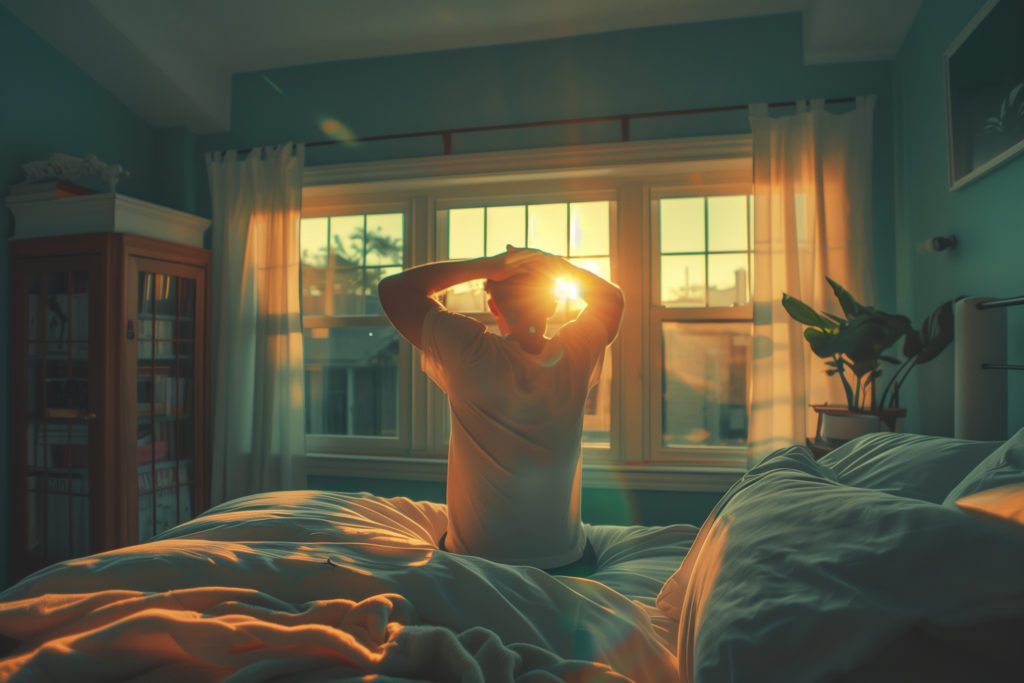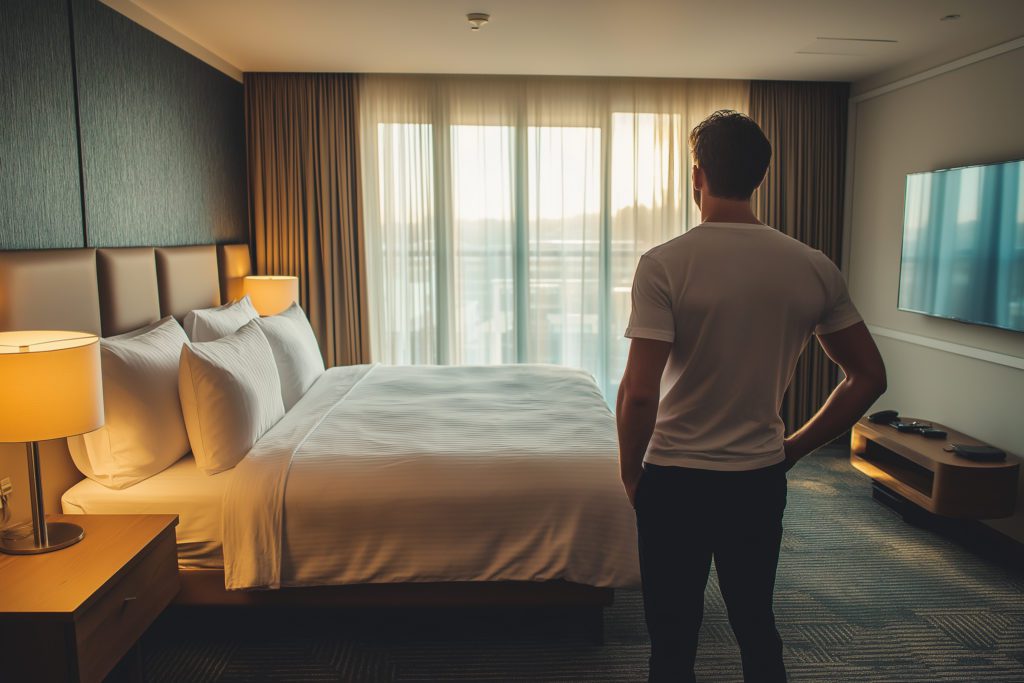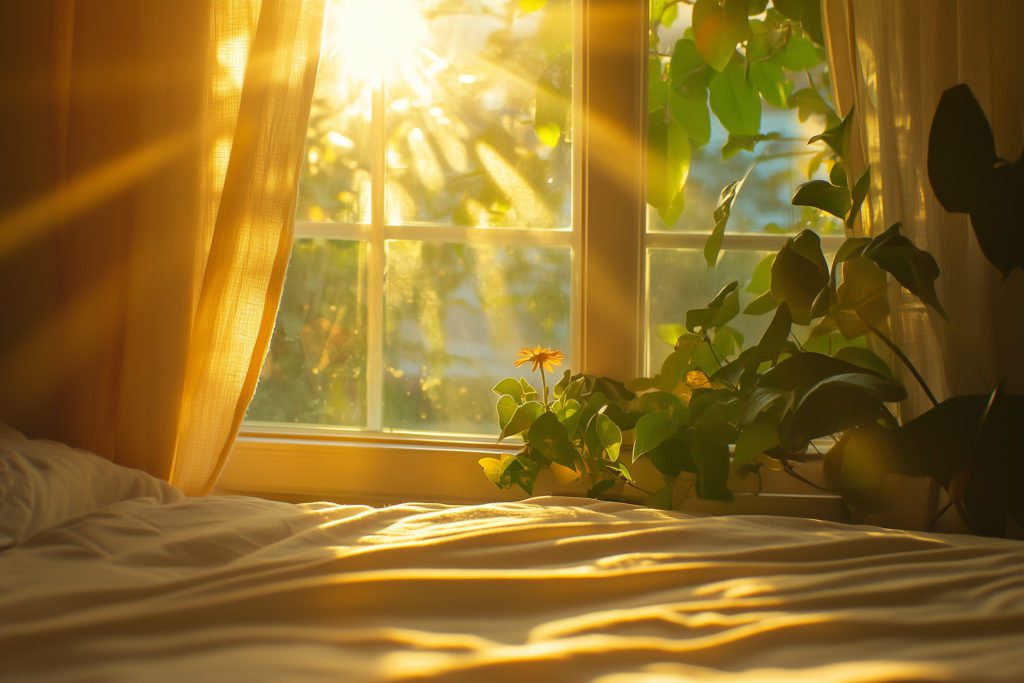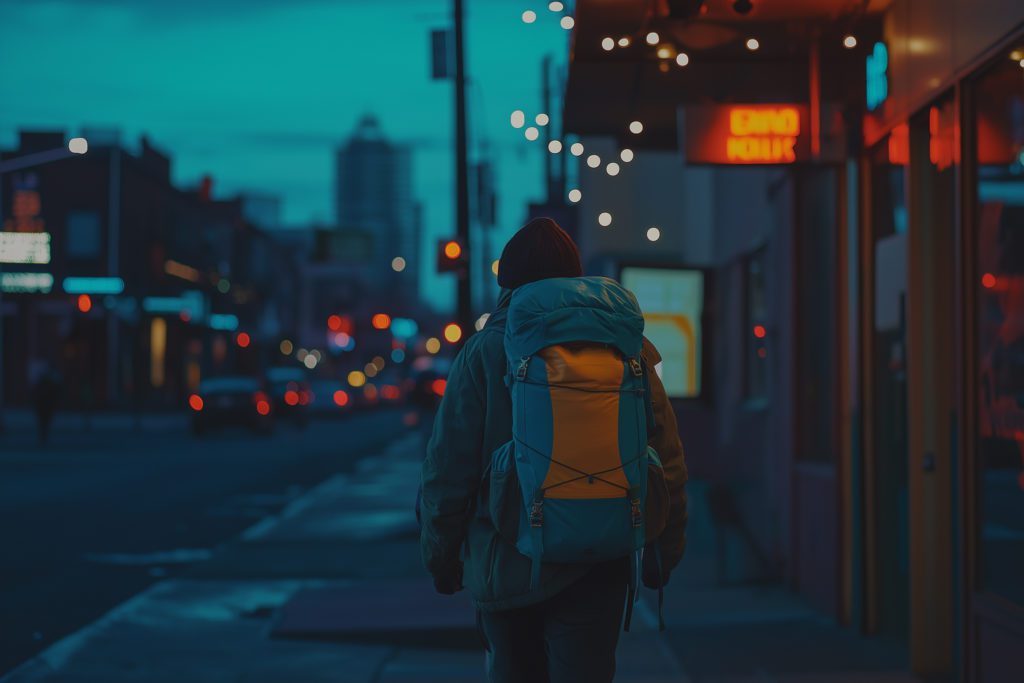
The Impact of Light Color on Sleep Health. Making the Right Choice for Your Bedroom
From blue light to warm hues, understand how different light colors affect your sleep and how to make the best choice for your bedroom

Have you ever thought about how light affects your sleep? It might not be something you really consider—when it’s bedtime, you simply turn out the light, right? Perhaps you like a pitch-black bedroom to sleep in, or maybe you feel reassured when there’s a peep of light coming in through the blinds.
But we want to talk about the light you’re exposed to BEFORE you switch out the light. We all spend hours each day glued to some sort of screen (cellphones, tablets, TVs…) and 90% of Americans look at some kind of technological device in the hour before bed.
And the fact is, the light color in our bedrooms plays a pivotal role in our sleep quality, and it’s often considerably more significant than we realize. Whether it's the stimulating blue light or the soothing embrace of red light, each shade holds the power to shape our nightly journey into (hopefully) deep sleep.
At Pillow, we’re committed to helping you gain a deeper understanding of your sleep cycle, sharing knowledge so you can improve your sleep hygiene for better sleep, and ultimately an enhanced quality of life. In this article, we’ll look at the science behind light color and its effects on sleep health, guiding you to make informed decisions for your sleep sanctuary.
What’s the Science Behind Light and Sleep?
Light color directly influences our circadian rhythm, the body’s natural clock (or ‘internal clock’) that dictates our sleep-wake cycle. Exposure to different light colors can either help or hinder us in our attempt to sleep soundly. Certain shades promote wakefulness, while others help prepare us for sleep by affecting melatonin production, the hormone responsible for sleep onset.
Mainly we talk about blue light, which can be disruptive to sleep, and warm light like reds and oranges, which aid sleep. The lesser-mentioned green light, which also promotes sleep, is also worth a mention.
Selecting the best light color for sleep in your bedroom involves understanding the unique impact of each spectrum.
Blue light
What is it?
Blue light is the light emitted by the sun. It may not look like it on a bright day, but it’s the reason the sky is blue.
Blue light is emitted to a lesser degree by electronic devices such as:
- Ebook readers (e.g. Kindles)
- LED bulbs
- Cellphones
- Tablets
- Televisions
Blue light and sleep
Blue light is beneficial during the day when we want to be alert and awake. Its presence at night can be detrimental, partly because it disrupts the body’s production of melatonin—the hormone that makes us sleepy.
A 2015 study compared the biological effects of reading a light-emitting ebook before bed with reading a printed book. It found those reading the ebook took longer to fall asleep, and had reduced evening sleepiness, reduced melatonin secretion, later timing of their circadian clock, and reduced alertness the next morning.
Warm (red) light
What is it?
When we talk about warm light, we’re referring to tones such as red, yellowy and amber hues that are reminiscent of sunsets and sunrises.
Red light and sleep
Red light is beneficial before bedtime, as it can increase melatonin level and aid in sleep preparation. Sunset and sunrise tones naturally signal to the body to prepare for sleep.
A 2012 study exposed Chinese basketball players to 30 minutes of red light before bed over a 14-day period. The results were higher melatonin levels, improved quality of sleep, and athlete performance.
Green light
What is it?
The less-talked-about green light is a bit of a contradiction. This cold light is a little bit like blue light in that it reduces melatonin levels, so at first glance, would appear to be one to avoid if you’re hoping to get a restful night’s sleep..
Green light and sleep
Despite the fact that green light hinders our body’s level of melatonin, the sleep hormone, it may have other sleep-promoting benefits.
A 2016 study found that green light produced rapid sleep onset in mice (between one and three minutes, compared to between 16 and 19 minutes for blue light).
What Light Color Should I Choose For My Bedroom?
There are many ways you can use light color to create a sleep-promoting environment, such as:
- Warm lighting: Use bedside lamps or night lights in warmer tones like red and amber. You can install tinted bulbs or filters to existing lights, or purchase lamps specially designed to emit warm hues.
- Cold lighting: Install blue light filters on all of your electronic devices and opt for screen-free time at least an hour before bed.
- Smart lighting: Explore lighting solutions that automatically adjust to emit warmer colors as bedtime approaches. This way, you can sync the lighting in your home with your circadian rhythm to promote good sleep.
Choosing the best light color for sleep involves more than preference; it's about understanding the science of light and sleep and making adjustments to support your body's natural sleep process.
Implementing the Right Lighting Strategy for Better Sleep
Along with light color, there are a number of other light-related tips that can help you sleep more soundly and crafting a bedroom space conducive to sleep. Consider these additional tips:
1. Be sure to get out in the natural sunlight during the day in order to reinforce your circadian rhythm. If you can, open your blind or curtains upon waking and get out in the morning light as soon as possible.
2. Embrace total darkness at night, using blackout curtains or a sleep mask, blocking out all sources of light.
3. If you don’t feel comfortable in complete darkness, incorporate a dim red or amber night light in your bedroom for safety or comfort. If you can, position it away from the bed to minimize disturbance.

Written by
Georgia Austin
Professionally trained copywriter, editor, and content marketing strategist with over 7 years of experience—working with brands like Nike, Siemens, Toshiba, Tommy Hilfiger, Culture Trip, and Klook.
Download Pillow
Get help
Press & News
Legal
Connect
X (Twitter)
Company
Copyright © Neybox Digital Ltd.



